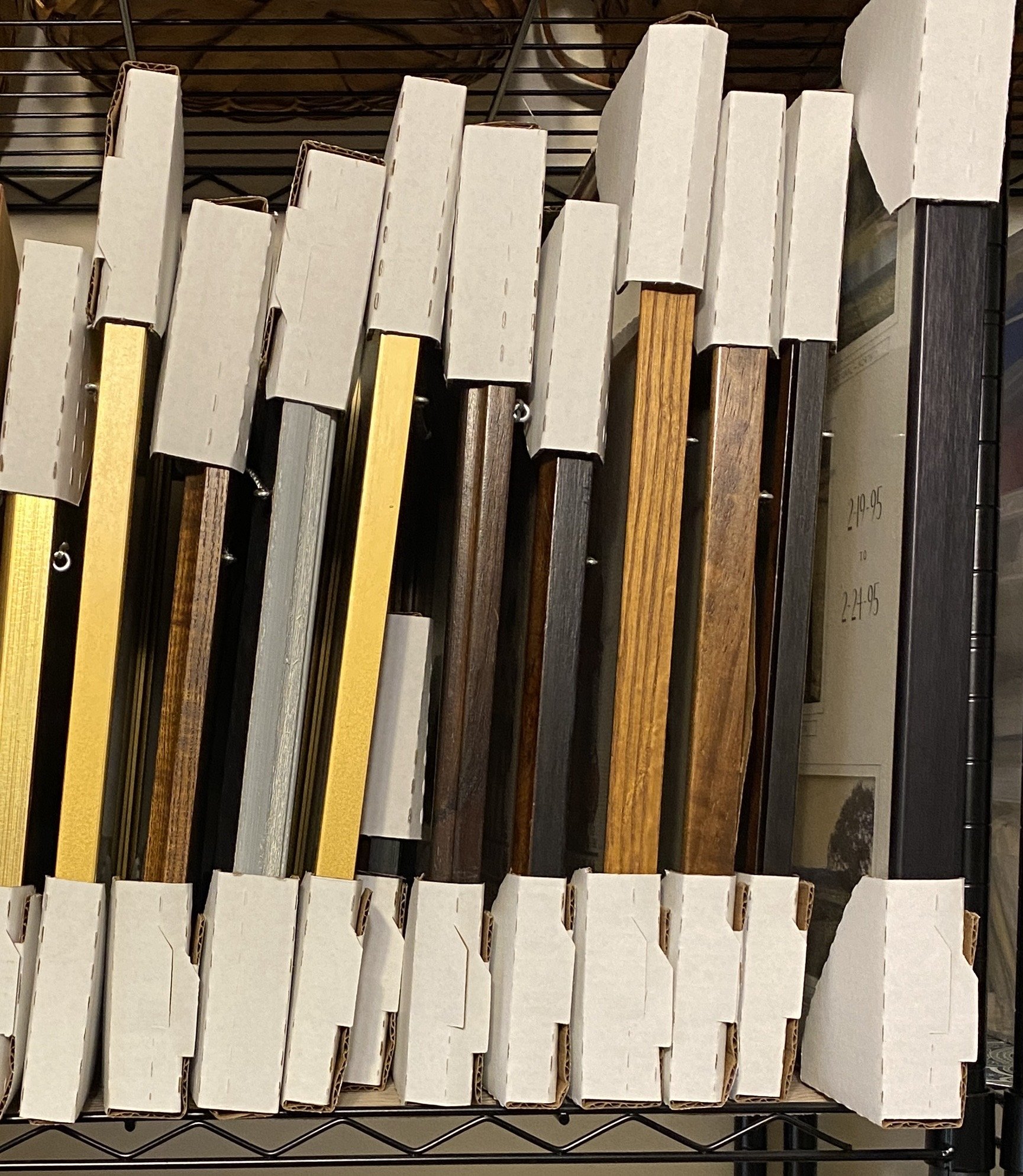May is the month when artists and photographers gear up in earnest for the upcoming season of art shows. Whether you are a professional artist or just beginning to show your work, there are some things that are important to consider when preparing your art to show.
Photo by Jennie Razumnaya on Unsplash
Signing artwork
Every work of art should be signed. And adding a date is not a bad idea either. Even if you are not a professional artist, it’s important for future generations to know that you created that lovely work of art.
What should you use to sign artwork? If it’s not a painting where you can use a coordinating paint color, a good choice from an archival standpoint is a Micron pen. You can get Microns at any good art supply store, and we have some in the store if you want to sign your art just prior to framing. Sharpies will fade. Pen or pencil will fade as well.
Be sure to sign the artwork at least 1/2” up from the bottom and in from the sides. Roughly 1/4” of the art will be covered by the frame if not matted. And if you do mat, we still need to cover some of the art to keep it in the mat.
Photo by Loretta Smith
What frames work best?
Artists often ask me what frames sell best. And if they should frame at all or sell their artwork matted. That really depends on your artwork and your audience. Remember that the frame and matting should work together to draw the viewer’s eye into the artwork, so a simple black frame may not be the best choice. We have lots of choices that can be used in a multitude of settings and will blend with a number of styles of artwork.
Why not do some testing and note your customers’ reactions when showing your work? Try different styles of frames and also try just matting some pieces to see which your customers prefer.
We once worked with an artist who tried several different styles of frame and finally decided to sell all of his paintings in the same gold frame. He liked how his work looked in that frame and reasoned that if a customer didn’t like the frame, he would sell the art unframed and include one of our cards with the artwork. The customer would then be able to have the artwork framed in something that really appealed to them, and the artist would use the frame on another painting.
Cardboard corners protect the corners of the frame during transport.
Transporting artwork
When we finish a frame, we wrap the framed art in plastic and put cardboard protectors on each corner to cushion the corners while in transport. The last thing you want is to damage the frame transporting it home. Artists should always protect the corners of the frame while transporting to and from shows.
Be sure that you have cleared adequate space in your vehicle for your framed art; resting it on top of all of your other stuff is never a good idea. And never leave framed artwork in the car while you do other errands. Especially in the summer. The heat in your closed car can be damaging to your artwork.
Artwork storage
Storing artwork between shows
If your artwork is matted, it’s very important to be sure to store it so the top is up. The hinges holding your art in place are meant to be at the top of your artwork at all times. It may make more sense in your space to line frames up by size and shape, but that artwork that is stored with the top of the painting to the side puts stress on the hinges, and they will fail over time.
We wish you the best of luck in the coming season, and remember that we are always available to help in any way we can.
Warmly,
Jan




